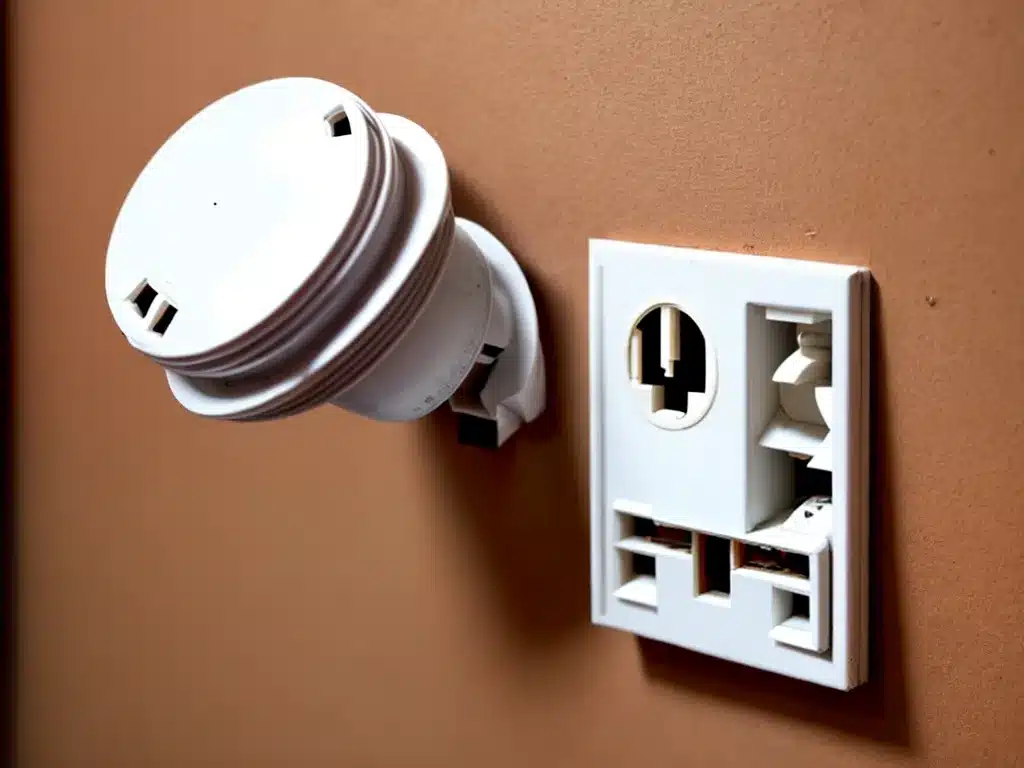
How to Safely Replace Your Home’s Old and Potentially Unsafe Electrical Sockets
Replacing old or unsafe electrical outlets in your home can significantly improve electrical safety, but it does require caution. As a homeowner, I wanted to share my recent experience and research to help others navigate this project safely.
Why Replacing Outlets May Be Necessary
There are a few reasons why replacing electrical outlets might be a good idea:
-
Outlets are very old. Outlets have come a long way in safety features and durability over the years. Older outlets may not trip modern circuit breakers as reliably. Replacing them brings your home up to modern electrical standards.
-
Outlets show signs of damage or wear. Cracked, burnt, or loose outlets can present fire and shock hazards. It’s best to replace them before problems occur.
-
You need more outlets. Sometimes adding more outlets in a room is easier than using extension cords. As long as your home’s electrical system can handle the extra load, adding outlets is a worthwhile upgrade.
-
Grounding issues. Outlets without a ground wire are dangerous in modern homes. Replacing ungrounded outlets with GFCI outlets adds protection from shocks.
Dangers of DIY Electrical Work
While replacing outlets may seem straightforward, there are risks involved that require caution:
-
Electric shock. Coming into contact with live wires can result in serious injury or death by electrocution. Turning off the circuit at the breaker can prevent this.
-
Electrical fires. Faulty wiring can overheat and spark fires. Using caution not to overload circuits prevents this.
-
Damaging your home’s electrical system. Mistakes during installations can damage wiring and render outlets or breakers inoperative.
Proper safety precautions are absolutely necessary, which leads to the next section…
How to Replace Outlets Safely
Here are some step-by-step tips to safely replace electrical outlets in your home:
1. Turn Off the Power and Verify
The first step is to turn off the circuit breaker for the outlet you want to replace. I also recommend turning off the main breaker to be extra safe. Verify power is off by plugging in a lamp and switching it on.
2. Remove the Old Outlet
- Unscrew and remove the cover plate first.
- Using a voltage tester on the wires, double check that power is off.
- Unscrew the outlet from the electrical box and carefully pull it out.
- Take note of the wire connections to replicate later.
- Unscrew the wires and remove the old outlet.
3. Prepare the New Outlet
- Choose the new grounded outlet you want to install.
- Feed the wires through the new outlet.
- Match wire colors exactly when reconnecting them.
- Secure the outlet and wires firmly using screwdrivers.
4. Install the New Outlet
- Check connections again for tightness.
- Push wires back into the electrical box.
- Secure the outlet flush to the box using screws.
- Replace the cover plate.
5. Restore Power and Test
- Turn the main and circuit breaker back on.
- Plug in a lamp and test that the outlet works.
- Use a voltage tester to verify grounding.
When to Call an Electrician
While DIY outlet replacement is straightforward, there are times to call a professional electrician instead:
- Old wiring in the home’s electrical system needs replacing.
- You want to add new circuits with outlets.
- Electrical boxes are very crowded behind outlets.
- The project requires rewiring and conduits.
- You don’t feel fully comfortable doing it yourself.
Replacing outlets requires working carefully with dangerous electricity. If a project scope seems beyond your skill level, hire an electrician to prevent hazards.
Conclusion
Modernizing your home’s aging electrical outlets has safety benefits, but also risks if mistakes are made. With adequate precautions like turning off power, verifying connections, and calling an electrician when necessary, most homeowners can upgrade outlets safely and improve electrical reliability in their homes. Just be sure to research ahead of time and work methodically.
